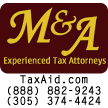On August 29, 2016 we posted
U.S. Treasury Seeks Comments on Form 8975 - CbC Reporting Form where we discussed
that the Treasury published a notice in the Federal Register seeking comments on IRS Form 8975 (Country-by-Country Report), which ultimate parent entities of U.S. multinational enterprise (MNE) groups will use for country-by-country (CbC) reporting purposes. Written comments are due by September 21, 2016.
Now the IRS has issued draft versions of Form 8975, Country-by-Country Report, Schedule A to that form, and the accompanying instructions. Country-by-country (CbC) reporting is generally required by ultimate parent entities of U.S. multinational enterprise (MNE) groups for tax years beginning on or after June 30, 2016.
"Businesses or other For-Profits" are to be affected by the new CbC Reporting Requirement, which Treasury estimates
will take 4,680 Hours to Comply With Each Year!
The Regulation § 1.6038-4(d)(1) says that the following information must be included on Form 8975 with respect to each constituent entity of the U.S. MNE group, as required:
- The complete legal name of the constituent entity.
- The tax jurisdiction, if any, in which the constituent entity is resident for tax purposes.
- The tax jurisdiction in which the constituent entity is organized or incorporated (if different from the tax jurisdiction of residence).
- The tax identification number, if any, used for the constituent entity by the tax administration of the constituent entity's tax jurisdiction of residence.
- The main business activity or activities of the constituent entity.
In addition, Form 8975 must contain extensive information for each tax jurisdiction in which one or more constituent entities of a U.S. MNE group is resident, presented as an aggregate of the information for the constituent entities resident in each tax jurisdiction (Reg. § 1.6038-4(d)(2)).
The reporting period covered by IRS Form 8975 is the period of the ultimate parent entity's applicable financial statement prepared for the 12-month period (or a 52-53 week period described in Section 441(f)) that ends with or within the ultimate parent entity's tax year.
If the ultimate parent entity does not prepare an annual applicable financial statement, the reporting period covered by Form 8975 is the 12-month period (or a 52-53 week period described in Section 441(f)) that ends on the last day of the ultimate parent entity's tax year. (Reg. 1.6038-4(c)).
Whatever the reason for the strides, US Multi-National Entities may soon have an optional method for satisfying their CbC reporting requirements for 2016.
The draft instructions also provide specific guidance on filling out the two parts of the Form 8975. Filers must complete the information at the top of the form regarding the reporting period and must complete Part I. If filing an amended return, a filer must check the amended return box. Schedule A (Form 8975) must be attached to the Form 8975 for each tax jurisdiction in which the MNE group operates, and a Schedule A (Form 8975) is also required to report “stateless” entities and information, if any. (See below for more information on Schedule A.)
Completing Part II of Form 8975 is optional. Part II is where a filer can enter additional information related to the MNE group, such as a narrative description of the overall business operations and structure of the group or an overall assumption or convention that was used which might have an effect on the report. Any financial amounts entered in Part II must be stated in U.S. dollars. Filers are advised that they aren't limited to the allotted space on the form and can complete as many additional page 2, Part II, sections as is necessary.
The draft instructions state that a separate Schedule A, “Tax Jurisdiction and Constituent Entity Information,” is to be completed for each tax jurisdiction of the MNE group. The Schedule has three parts, the first of which has entries to provide information about the tax jurisdiction to which the schedule pertains (i.e., the jurisdiction itself, and revenues, profits, taxes paid, etc. there), the second of which covers the constituent entity (or entities) in the jurisdiction, and the third of which has space for an filer to provide “any additional information related to the information reported in Part I and II.”
There appears to be an inconsistency in Line 1 of Schedule A (Revenues) and the draft instructions.
Have an International Tax Problem?
Contact the Tax Lawyers at
Marini & Associates, P.A.
for a FREE Tax Consultation Contact US at
or Toll Free at 888-8TaxAid (888 882-9243).
Background. In June of 2016, IRS issued country-by-country (CbC) reporting regs that require certain U.S. business entities that are the ultimate parent entity of a U.S. multinational enterprise (MNE) group with annual revenue for the preceding reporting period of $850 million or more, to file Form 8975 annually with IRS. (
Reg. § 1.6038-4; see
Weekly Alert ¶ 45 07/07/2016) Form 8975 requires the ultimate parent entity of a U.S. MNE group to report information, on a country-by-country basis, related to the group's income and taxes paid, together with certain indicators of the location of the group's economic activity.
The reporting regs apply to “reporting periods” of ultimate parent entities of U.S. MNE groups that begin on or after the first day of the first tax year of the ultimate parent entity that begins on or after June 30, 2016. However, to deal with earlier effective dates in other jurisdictions, IRS has provided a procedure for ultimate parent entities of U.S. MNE groups to file Form 8975 for periods before June 30, 2016. (Rev Proc 2017-23, 2017-7 IRB 915; see Weekly Alert ¶ 21 1/26/2017) For this purpose, the reporting period is the period of the ultimate parent entity's applicable financial statement prepared for the 12-month period that ends with or within the ultimate parent entity's tax year; or, if the ultimate parent entity does not prepare an annual applicable financial statement, the 12-month period that ends on the last day of the ultimate parent entity's tax year. (Reg. § 1.6038-4(c))
Draft Form 8975 and Schedule A. The draft Form 8975, Country-by-Country Report, has two parts. The first part has entries to provide information relating to the identification of the filer, such as legal name and employer identification number (EIN), and the second is titled simply “Additional Information” and provides space for a taxpayer to “[e]nter any additional information related to the multinational enterprise group.”
The accompanying draft Schedule A (Form 8975), Tax Jurisdiction and Constituent Entity Information, has three parts. The first has entries to provide information about the tax jurisdiction to which the schedule pertains, the second covers the constituent entity (or entities) in the jurisdiction, and the final has space for an filer to provide “any additional information related to the information reported in Part I and II.”
Draft instructions. The draft instructions provide general information about Form 8975 and Schedule A, including relevant definitions, who must file, and how and where to do so. The instructions also emphasize that records must be maintained to support the information provided on Form 8975 and Schedules A, and that penalties under Code Sec. 6038(b) may apply for failure to report the information required on the form.
The Form 8975 and Schedules A should be attached to the ultimate parent entity's income tax return (e.g., Form 1120, 1065, etc.) and filed with IRS by the due date for that return, including extensions. To request an extension of time to file Form 8975, a filer must follow the instructions for the income tax return to which the Form will be attached. If the income tax return is filed electronically, then the Form 8975 and Schedules A must be attached electronically in the correct format.
The draft instructions also provide specific guidance on filling out the two parts of the Form 8975. Filers must complete the information at the top of the form regarding the reporting period and must complete Part I. If filing an amended return, a filer must check the amended return box. Schedule A (Form 8975) must be attached to the Form 8975 for each tax jurisdiction in which the MNE group operates, and a Schedule A (Form 8975) is also required to report “stateless” entities and information, if any. (See below for more information on Schedule A.)
Completing Part II of Form 8975 is optional. Part II is where a filer can enter additional information related to the MNE group, such as a narrative description of the overall business operations and structure of the group or an overall assumption or convention that was used which might have an effect on the report. Any financial amounts entered in Part II must be stated in U.S. dollars. Filers are advised that they aren't limited to the allotted space on the form and can complete as many additional page 2, Part II, sections as is necessary.
The draft instructions state that a separate Schedule A, “Tax Jurisdiction and Constituent Entity Information,” is to be completed for each tax jurisdiction of the MNE group. The Schedule has three parts, the first of which has entries to provide information about the tax jurisdiction to which the schedule pertains (i.e., the jurisdiction itself, and revenues, profits, taxes paid, etc. there), the second of which covers the constituent entity (or entities) in the jurisdiction, and the third of which has space for an filer to provide “any additional information related to the information reported in Part I and II.”
There appears to be an inconsistency in Line 1 of Schedule A (Revenues) and the draft instructions. Line 1a of Schedule A, Part I, is captioned “unrelated party,” and 1b says “related party.” However, the instructions indicate that 1a is for the aggregate revenues of the constituent entities listed in Part II (listed constituent entities) from transactions with other listed constituent entities, and that 1b is for the aggregate revenues of the listed constituent entities that are generated from transactions with third parties that are not constituent entities in your group.
The draft instructions also provide a number of clarifications, including to what constitutes “revenue,” and how to account for the tax paid, tax expense, and accumulated earnings of listed constituent entities that are “permanent establishments.” The instructions also provide that, for Line 7, number of employees, there are a number of ways to permissibly calculate this figure—i.e., the number as of year-end, the average employment levels for the year, etc.—and that reasonable rounding or approximation is permissible provided that it is consistently applied and doesn't materially distort the relative distribution of employees across various tax jurisdictions.
Part II of Schedule A, constituent entity information, is where filers provide requested information about the constituent entities within the tax jurisdiction. In addition to basic identifying information such as name and address, Line 4a also requests the nature of the main business activity of the constituent entitiy in the relevant tax jurisdiction. More than one Schedule A for the tax jurisdiction in Part I may be needed if the required information in Part II and/or Part III (below) will not fit on a single Schedule A. The draft instructions specify the sections that must be completed for any additional second Schedules A.
Like Form 8975, Part III of Schedule A is where filers can “enter any relevant information or explanation that you deem necessary or that would facilitate the understanding of the information provided in Parts I and II. The information may or may not relate to a specific constituent entity.” The draft instructions provide reference codes that filers can use to indicate if the additional information relates to a specific item in Part I.












